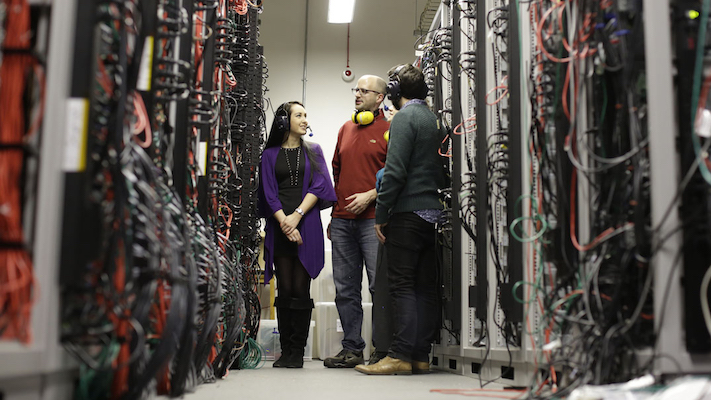Research Facilities
Our centre hosts facilities for detector development, astronomical observations, and computing.
To develop R&D technologies, our centre hosts a clean room fully equipped with semiconductor test equipment, and several laboratory spaces with a variety of capabilities, including semi-conductor characterisation, wire bonding, thermal impedance measurement, metrology and visual inspection.
Our centre features an observatory that serves as a teaching facility for undergraduate students pursuing a degree in Astrophysics. The observatory provides students with hands-on experience in astronomical observation and data science. In 2022, the Department of Physics and Astronomy made a significant investment to upgrade the observatory, enabling it to be operated remotely from any computer with an internet connection. This upgrade has greatly increased students' access to the observatory and available observing time.
Our centre is home to one of GridPP's largest computer clusters, and it is part of the London Tier-2 Center. The High Throughput Cluster (HTC) includes around 420 machines with over 15,000 job slots and 16 Nvidia GPUs, including high-memory nodes with 4TB of RAM. The site's Lustre parallel file system provides approximately 15 Petabytes of data storage space. QMUL is investing over £2 million in upgrading the local data centre to include heat pumps that will heat the university's building and water, thereby helping to reduce the carbon footprint.


